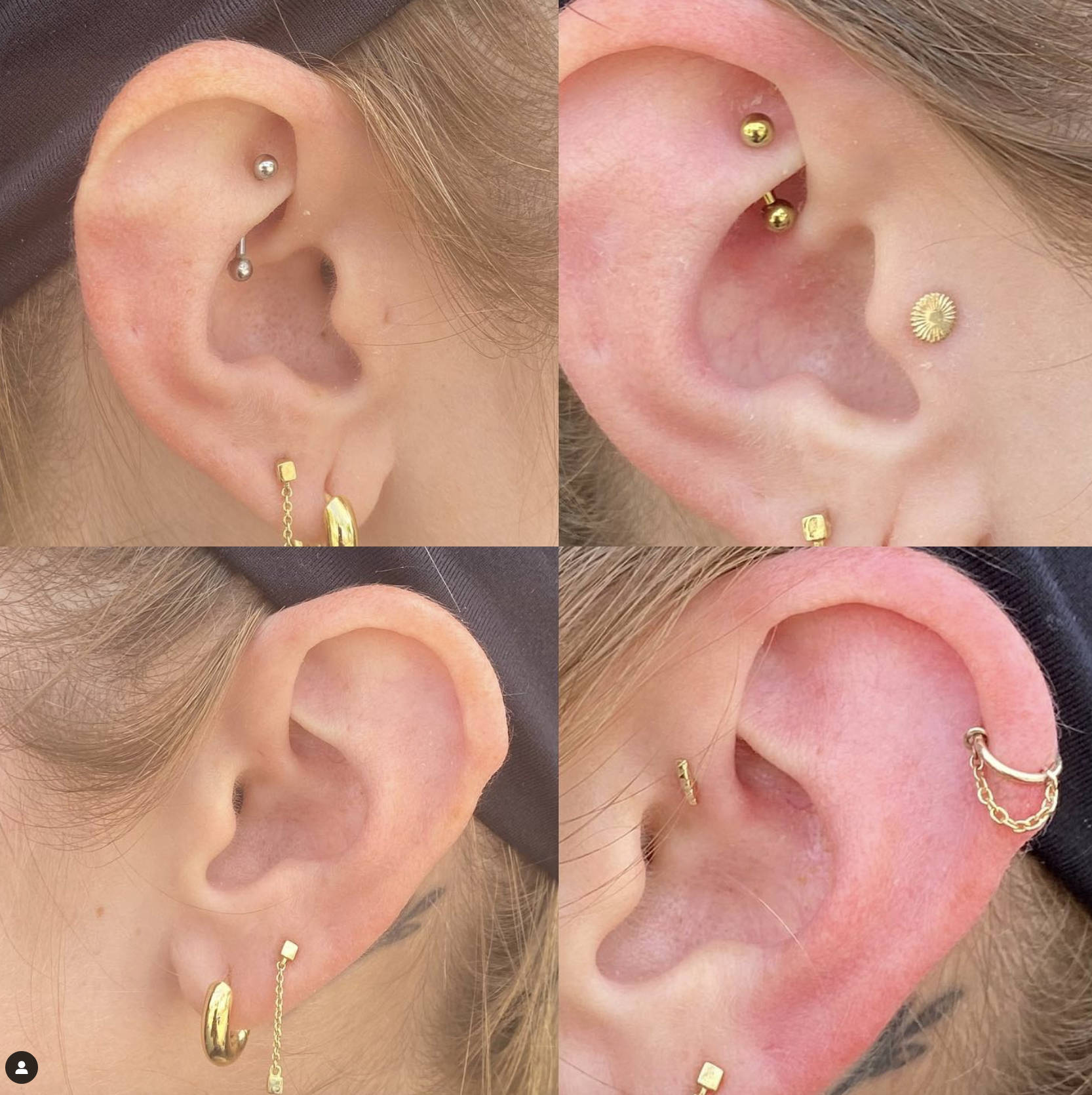Choosing the right jewelry for your body
- Posted on
- By Allen Dabbs
- Posted in auragold, aurapiercing, earcurating, earstyling, gauge, gold, goldbodyjewelry, hypoallergenic, Niobium, northhollywoodpiercing, piercingLA, piercinglosangeles, piercingonlystudio, piercingthevalley, qualitypiercings, studiocitypiercing, SurgicalSteel, thevalleypiercings, threaded, Titanium
- 0

A Guide to Choosing Quality Jewelry for Your Body Piercings
It's essential to choose pieces that not only complement your look but also prioritize safety and comfort. In this blog post, we'll explore the key factors to consider when selecting high-quality jewelry for your body piercings.
1. Material Matters
The material of your body jewelry plays a crucial role in your overall experience. Opt for materials that are hypoallergenic and compatible with your skin type. Some safe and popular materials include:
- Gold: Choose high-quality, nickel-free gold. We prefer 18 karat solid gold. We produce our own solid gold pieces in house at Aura.
- Surgical Steel: We typically ASTM F-138 certified implant grade stainless steel. A common choice for initial piercings due to its durability and hypoallergenic properties.
- Titanium: We usually use ASTM F-136 certified implant grade titanium. Lightweight and biocompatible, making it an excellent option for those with sensitive skin.
- Niobium: Another hypoallergenic option that comes in a variety of colors through anodization.
Steer clear of materials like nickel, brass, or low-quality alloys that may cause irritation or allergic reactions.
2. Gauge and Size
Selecting the right gauge (thickness) and size of jewelry is essential for both comfort and healing. The gauge should match the original piercing size, and the jewelry should fit snugly without causing discomfort. For example, initial piercings often require slightly thicker gauges to accommodate the healing process, while healed piercings can typically accommodate a wider range of sizes.
3. Jewelry Type and Style
The type and style of jewelry you choose depend on personal preference, the type of piercing, and the desired look. Here are some popular options:
- Studs and Barbells: Common choices for various piercings, including ears, nose, and tongue. They come in different lengths, designs, and decorative ends.
- Rings: Suitable for multiple piercings like nose, septum, navel, and more. Circular, captive bead, and seamless rings offer versatile options.
- Hoops and Hinged Rings: These are great for earlobe, helix, and cartilage piercings. Hinged rings are convenient for changing jewelry without removing the entire piece.
- Captives and Beads: Often used as decorative elements in rings, offering customization and individuality.
Explore different styles to find the one that resonates with your personality and complements your features.
4. Threadless and Internally Threaded Jewelry
Threadless and internally threaded jewelry designs are gaining popularity due to their ease of use and reduced irritation risk. Threadless jewelry features a pin that fits into the hollow end of the post, while internally threaded jewelry has threading inside the post, reducing friction and irritation during insertion.
5. Consider Healing and Long-Term Wear
For initial piercings, it's advisable to choose jewelry that minimizes movement and irritation during the healing process. Once fully healed, you can explore a wider range of styles. Jewelry with smooth edges and minimal crevices is ideal, as it prevents bacteria buildup and irritation.
6. Consult a Professional
When in doubt, consult your professional piercer. They can recommend appropriate jewelry based on your individual anatomy, healing progress, and personal preferences.
Conclusion
Choosing quality jewelry for your body piercings involves careful consideration of materials, sizes, styles, and your body's individual needs. Prioritize hypoallergenic materials, proper sizing, and comfortable designs to ensure both a safe healing process and a stunning, personal style statement. With the right jewelry, your body piercings can become not just adornments, but expressions of your unique personality and taste.

Comments
Be the first to comment...